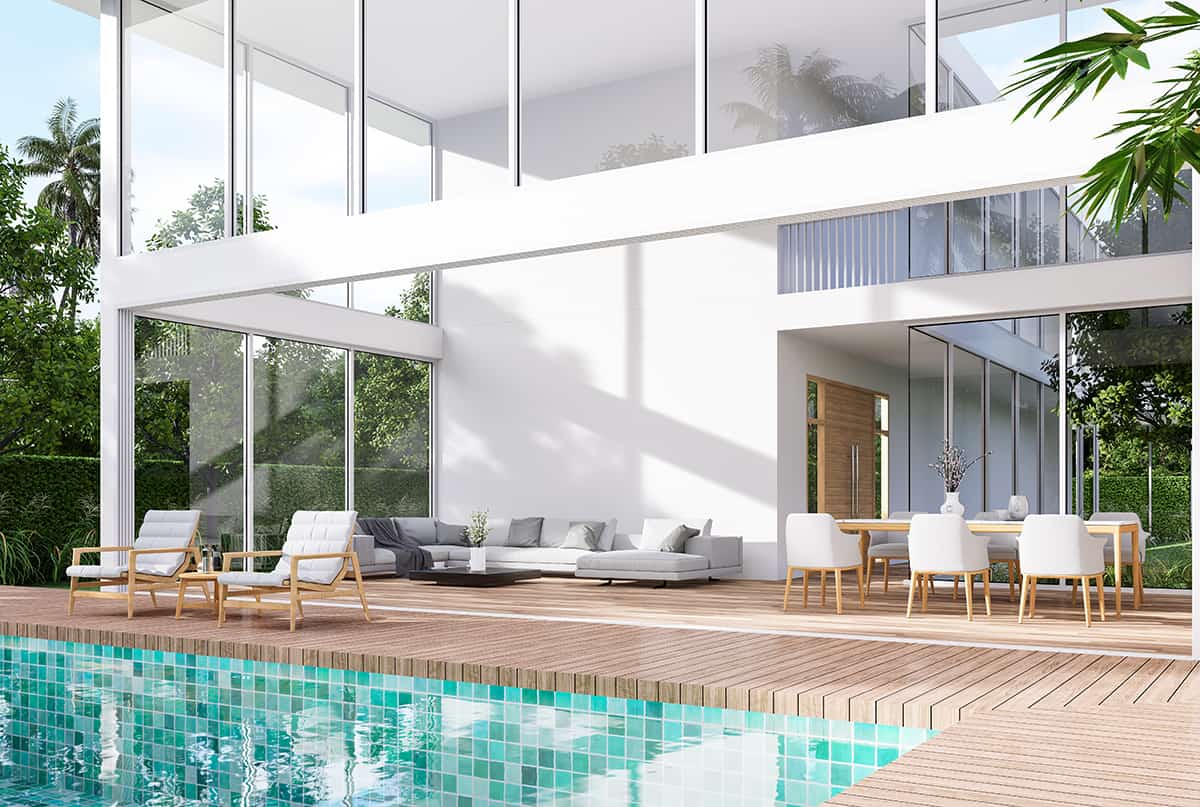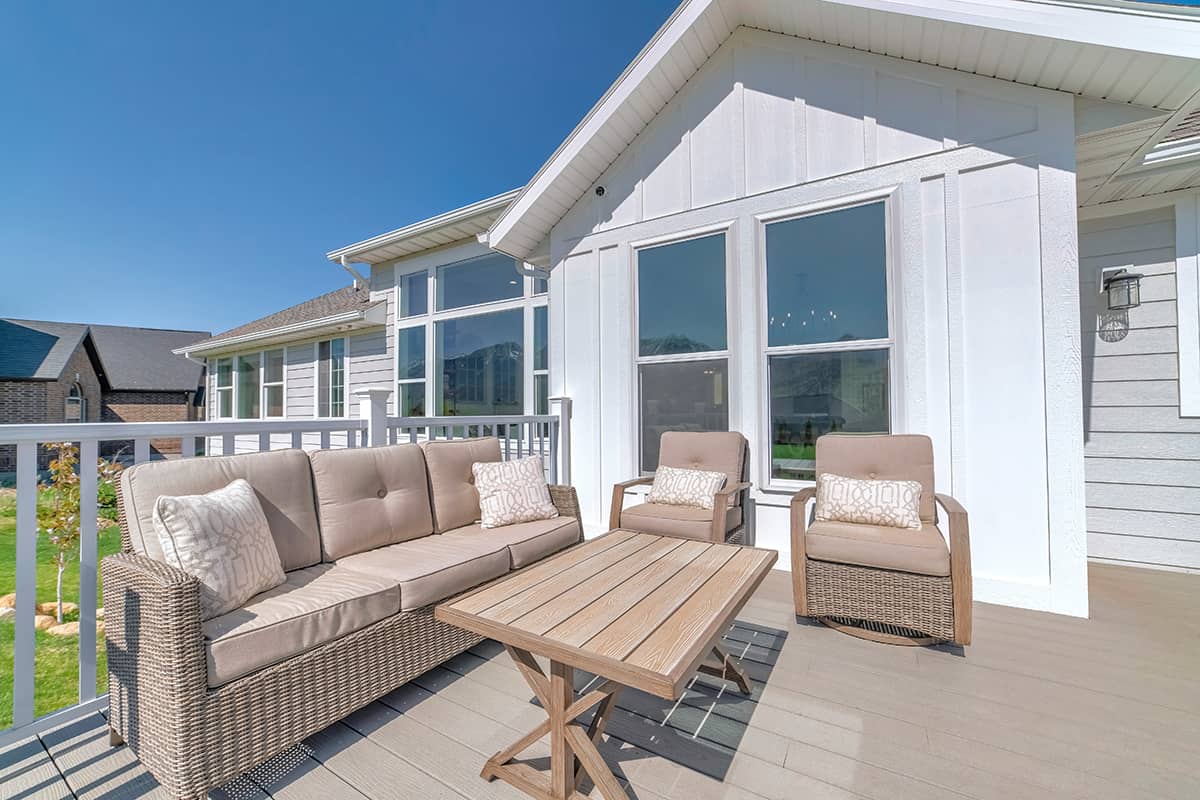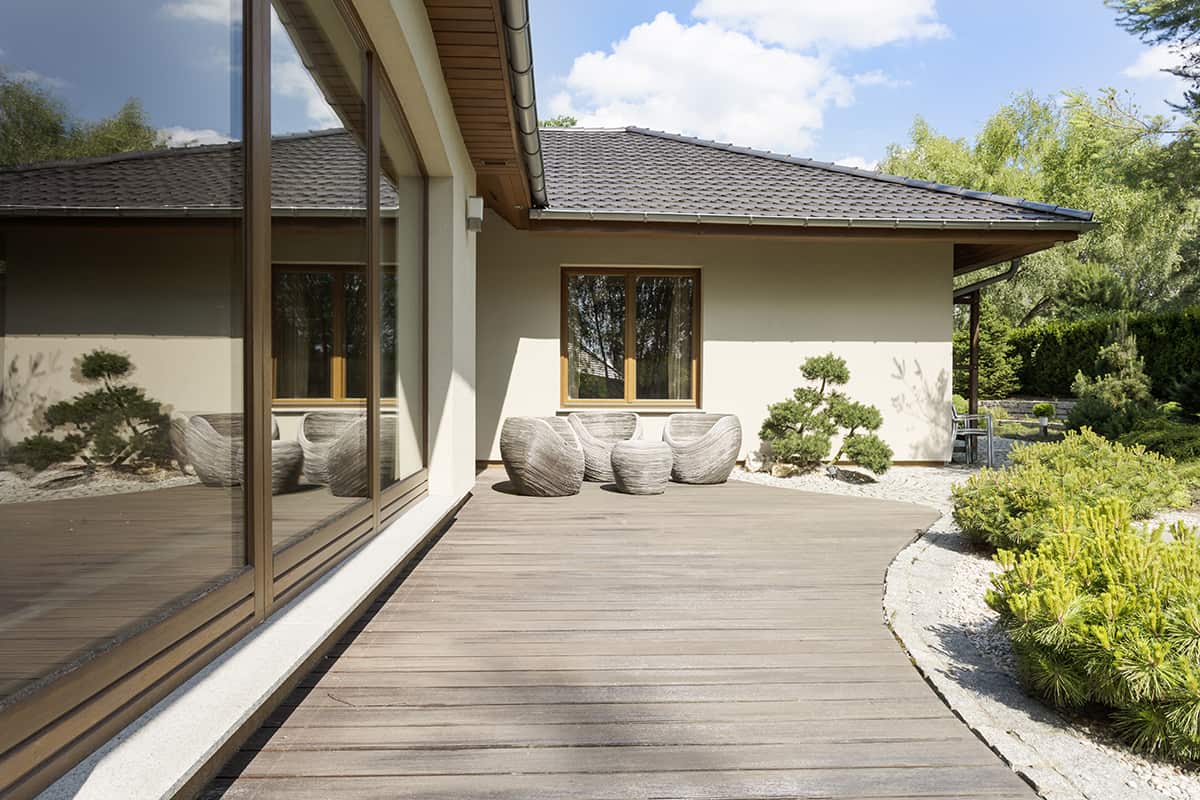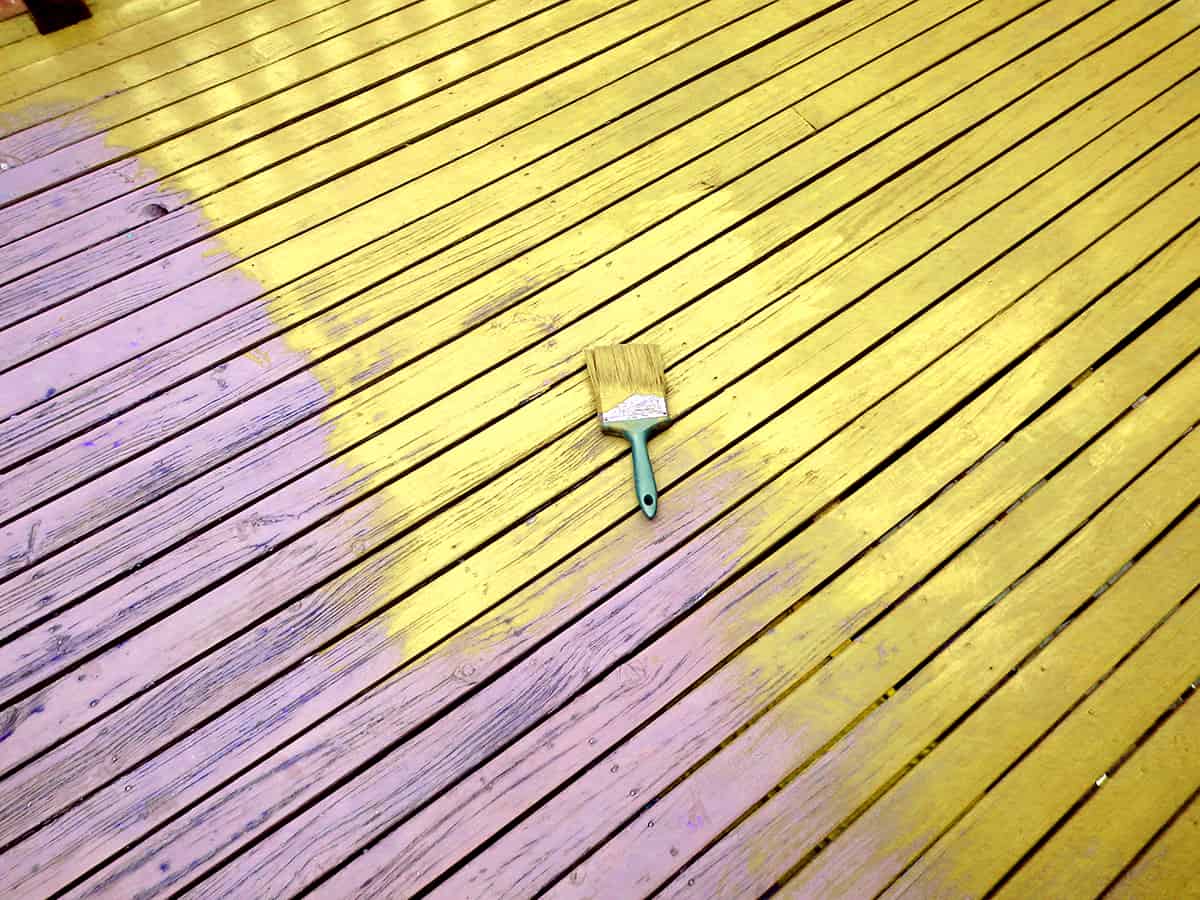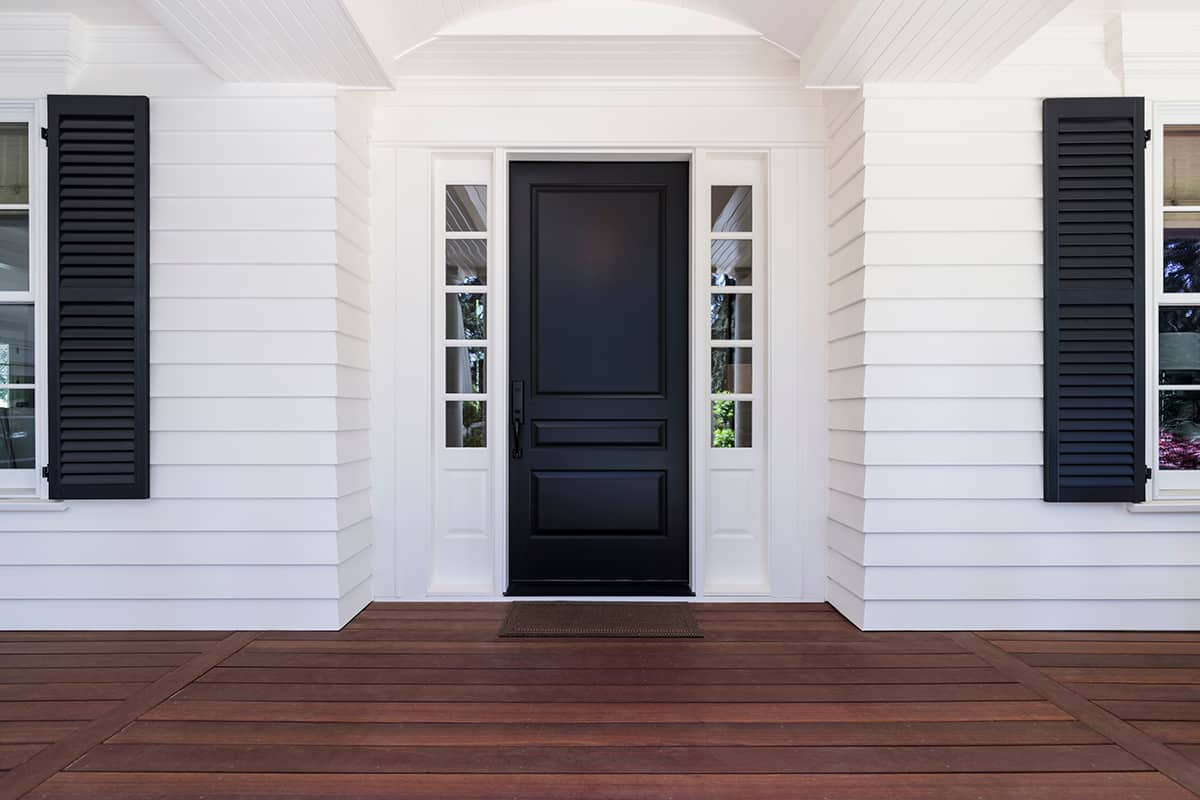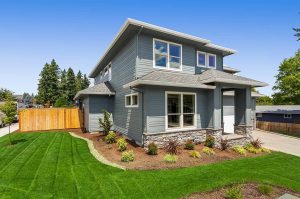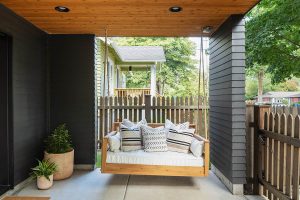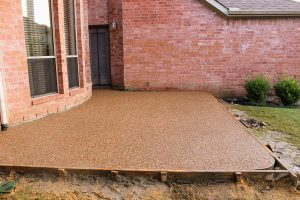Coordinating the exterior colors of your house can be challenging because there are so many aspects to consider, such as siding, garage doors, the front door, window frames, external trim, decking or a verandah, and even smaller items such as the mailbox and plant pots.
The way a designer would approach this task is to first select your color palette and then assign the colors to each area accordingly. For the exterior of a property, a color scheme that uses three main colors always works well.
Houses that have been painted white, or have white siding, are one of the easiest to coordinate with because you’re guaranteed that any colors will go with white. Decks in neutral colors will work well with white, and even brighter or dark colors can be good options.
Here we explore the best desk colors for white homes and how to choose an external color palette for a white house
Best Deck Colors with White Walls
Tan
If you want your deck to feel like it’s part of the landscape then tan is the ideal color choice because it is a natural shade of beige that will almost camouflage itself into the background of your outdoor space.
Whether you choose a wooden finish in a shade of tan or opt to paint your deck in a tan color, this is a classic shade that will never look dated or out of style. Use tan with white and black for a classic, elegant look, or keep it simple for a more rustic atmosphere.
White
A white deck next to a white house might initially sound a bit bland, but actually, this can look very striking when teamed with contrasting colored trim.
On the house pictured here, black trim around the sliding glass doors and around the windows has been used, which helps to separate the white decking from the white walls of the house. The black trim has also been coordinated with other exterior elements, such as the fence and the outdoor dining table legs, giving the entire look an intentionally stylized feel.
Black
If you want to create a deck space that contrasts against a white house, then black is the way to go. Black and white are a classic combination that look striking alongside each other yet don’t feel over the top.
A black deck has the advantage of being easier to keep clean compared with pale colors because it will hide dirt well. Opt for a matte black finish for a more casual style, or choose a glossy black deck paint for a glamorous look.
Gray
Gray decking is a nice option with a white house if you want a casual and easygoing look. The gray color used for the decking around this house is a pale dove gray shade, which contributes to a laidback, slightly rustic atmosphere in the garden.
It also coordinates with the grey tiles on the roof, creating a consistent color scheme and a sense of continuity. The addition of gray planters helps to further bring together the white and gray color palette for a look that feels polished and intentional.
Yellow
Yellow is a bright and cheerful color for an outdoor deck, which can really make the garden feel like a joyous place to spend time. Yellow and white go perfectly together, and you can add accents of gray if you want to help maintain a modern vibe or balance out the yellow with a hint of cool neutral.
Coordinate your yellow deck with some yellow flowering plants in the garden, or hang a yellow-framed mirror on the outside wall of your home. The yellow deck pictured here is a primary yellow shade, but a pastel lemon yellow would also look fresh and energizing against a white house. For a warmer appeal, opt for mustard yellow.
Choosing an Exterior Color Palette For a White House
Most designers agree that an exterior color palette should comprise three main colors. This is because a mix of three colors allows you to create balance and contrast while also ensuring continuity. For a three-color color scheme, you’ll want your main color, a contrasting color, and an accent color.
The main color is going to get the most coverage because it will be used across roughly 60% of the exterior components of your home. In the case of a house with white siding or white exterior walls, the main color is going to be white.
Next up, you need your contrasting color, which will be used across roughly 30% of your exterior components. This might include your window frames and trim, any shutters you might have, garage doors, a verandah, or a deck.
Next in line is your accent color, which will be the least used color, covering around 10% of the exterior elements of your home. Typically this will include the front door, maybe the mailbox, any stair railings, or some plant pots in the garden.
To choose your contrasting and accent color, you should consider the type of style you want to achieve and what is going to be most appropriate for the style of the property. You could also think about what you want your house to say about you since it should be an extension of your own style or personality.
White Color Schemes
There are advantages and disadvantages to having a white house. Homeowners with white properties will know all too well that white walls can be tough to keep looking clean because they show every spec of dirt, and they can also get stained from rainfall or other environmental factors.
The good news, though, is that white houses are among the best choices if you live in a hot climate because white reflects the sun and therefore, the interior of the home won’t get as hot as a dark-colored house. White is also a classic pure neutral that goes with anything and everything, so when it comes to style you can’t really go wrong. White houses can be made to look sleek and modern, traditional, or quirky.
They work with any theme, and you can put any color alongside them. The fact that you could choose from almost any color to use in a color palette with a white house can seem overwhelming because there’s simply so much choice. We prefer to reframe this as a positive; you can choose any color you like to go with your white house- there are no restrictions! Read on for some inspirational color schemes to use for white houses.
White, black, and tan
White, black, and tan are a classic color combination that will work for any style of home, whether that be modern and minimalist or traditional colonial. With white exterior walls, use black as your contrasting color to highlight certain elements of the outside of your home; for example, window frames and shutters will really stand out against a white house when painted in black.
Paint your deck black to coordinate with the shutters, and then add splashes of tan to tone down the whole look and give it a softer finish. Black and white can look harsh if no third color is used, so in this color palette, the tan helps to stop the contrasting shades from appearing too overwhelming. Consider a front door in natural tan colored wood or garage doors painted in tan with a matching mailbox.
White, gray, and yellow
For a cheerful exterior that looks modern and welcoming, opt for white walls with gray garage doors and gray decking, and a bright yellow front door coordinated with a yellow fence. This is a color scheme that can look quaint and inviting on older properties, or quirky and fun on modern properties.
If bright yellow isn’t your thing, a soft lemon yellow would work equally as well. Since gray is usually a coold temperature color, the warmth of yellow balances this out so that the house doesn’t look dull.
White, green, and red
Green and red are contrasting colors that can appear overstimulating; however, when used with a neutral as the main color, such as white in this instance, the overall look can be very effective. White will be the dominant color on a white house due to the fact that it will occupy more surface space than any other color.
This helps to tone down the contrast between red and green so they can be appreciated. With a white house, paint the deck in a shade of sage green and carry this on with other exterior elements such as a verandah, fences, or shutters. Next, use a deep shade of red such as merlot, or a fresh cherry red, to accent the green. This could be applied to the front door, to planters, or to your house number on the wall.
